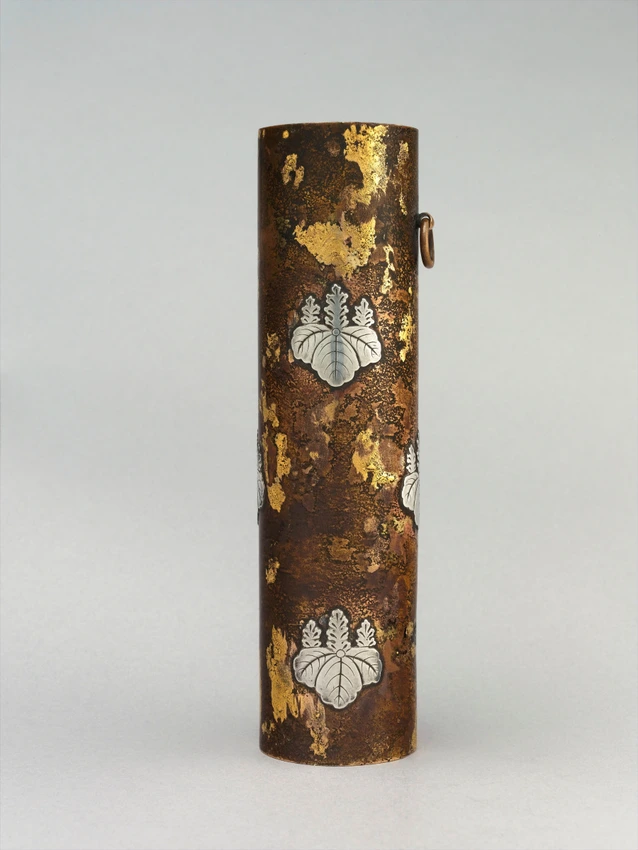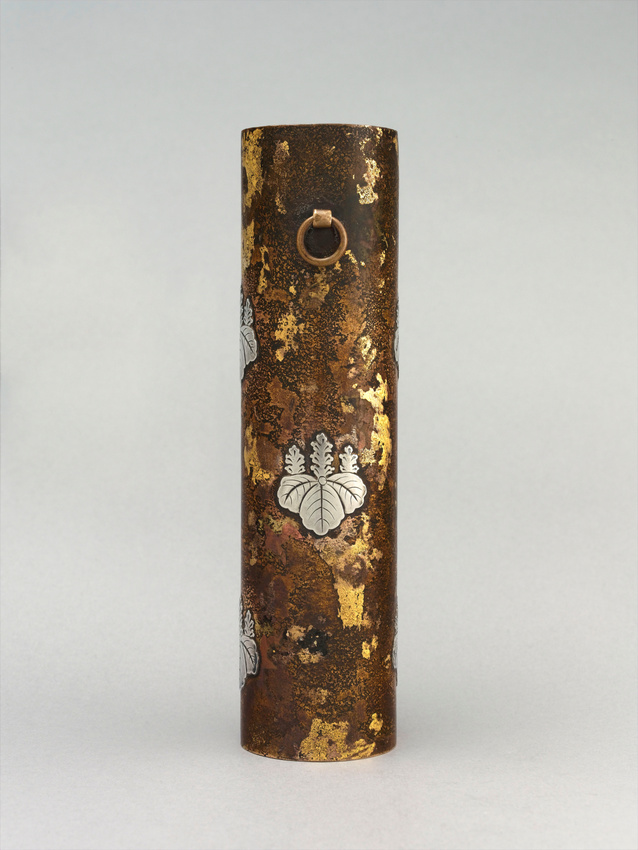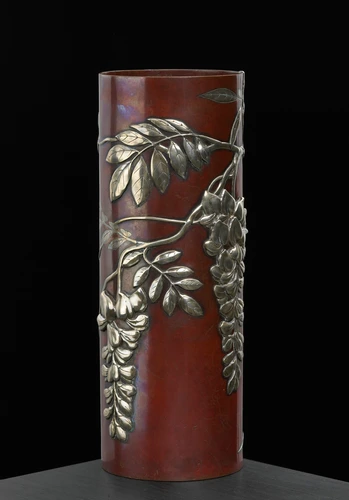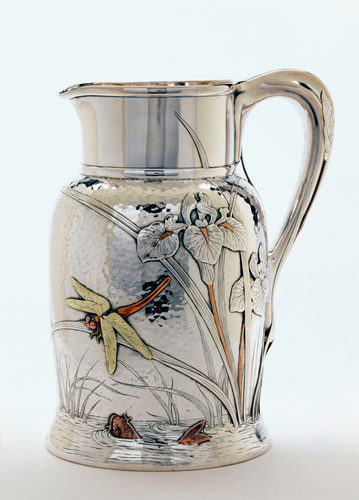Vase
Artistic director for Tiffany and Company between 1875 and 1891, Edward Chandler Moore (1827-1891) put his mark on the style of this major American company, founded in 1837, dealing in goldwork and jewellery. Very early on he became interested in the art of the Far East, particularly in Japanese art. He created a collection of high quality objets d'arts from Asia, which clearly had a profound influence on him.
Cylindrical in form, produced in a combination of different metals, this vase was directly inspired by a Japanese vase called a "brush holder", from the collection. Here a decoration has been applied in solid silver, repeating six times the motif of a paulownia leaf. This shape was taken directly from the coat of arms of the Japanese Imperial family. This decoration gives the vase an exquisite relief, a decorative principle that was then the distinctive signature of the Tiffany gold work. Finally, there is a ring attached to the body of the vase in order to hang it on the wall.
From 1872-1873, the Japanese style objects produced by Tiffany and Co. stunned the public. Showered with praise at the Centennial Exhibition in Philadelphia in 1876, just when this object was created, is a strong illustration of this. For this event, in his report on the decorative arts, Auguste Bartholdi underlined the power of Japanism in breaking down the Neo-Grec and Neo-Renaissance dogmas, and in renewing contemporary creation. According to him, Tiffany was one of its most skilful exponents.
An elegant product of effervescent artistic talent, interested in and open to other civilisations, the vase appears to be one of the first major attempts to adapt a Japanese piece to western tastes.






